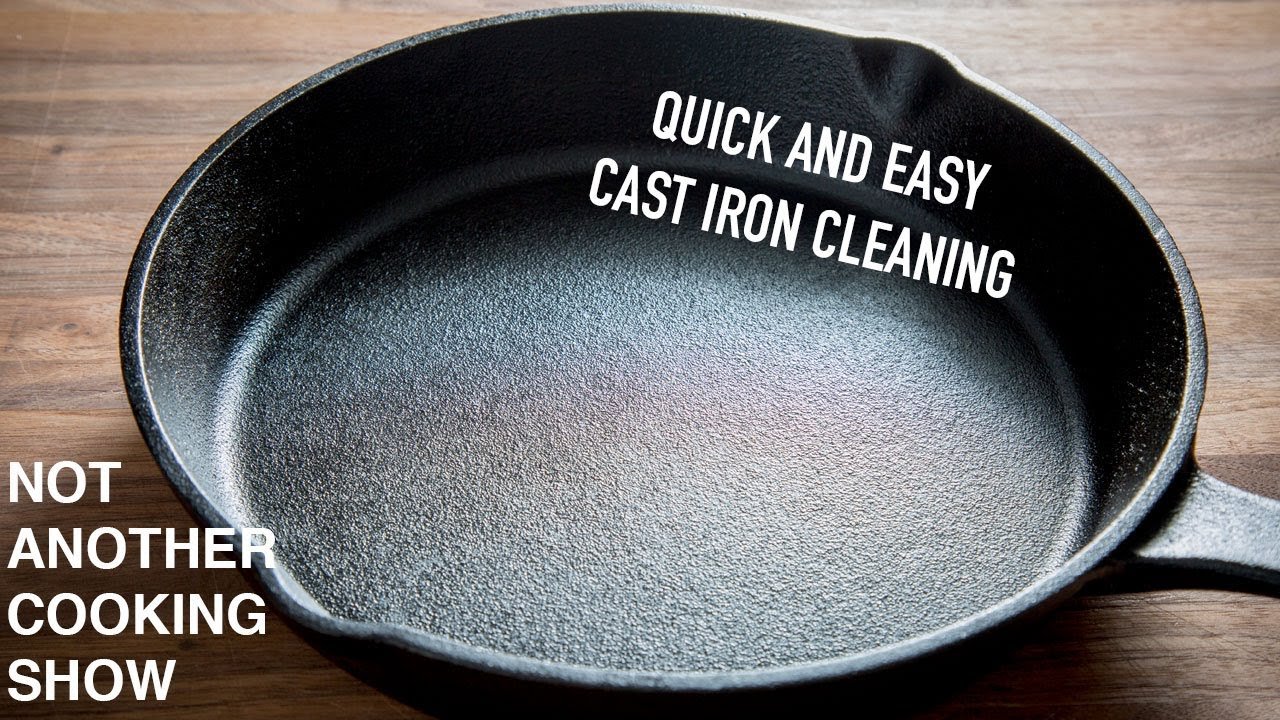How to
How to Clean a Cast Iron Skillet

The cast iron skillet is a revered tool in kitchens around the globe, known for its superior heat retention and durability. However, its maintenance, particularly cleaning, is a subject of much debate and confusion. In this comprehensive guide, we’ll walk you through the dos and don’ts of cleaning your cast iron skillet, ensuring it lasts for generations to come.
Understanding Cast Iron
Before diving into the cleaning process, it’s essential to understand what makes cast iron unique. Cast iron is an alloy of iron and carbon that, when cared for correctly, becomes virtually non-stick due to the seasoning layer that builds up over time. This seasoning is a layer of polymerized fat that not only protects the skillet from rust but also provides a natural, easy-release surface for cooking. Proper cleaning and maintenance are crucial in preserving this seasoning.
The Cleaning Process
Cleaning a cast iron skillet is simpler than many believe, but it requires adherence to specific guidelines to maintain its seasoning and integrity.
Right After Cooking
- Let it Cool: Allow your skillet to cool down a bit before you start cleaning. Plunging a hot cast iron skillet into cold water can cause it to warp or crack due to thermal shock.
- Use Hot Water: Rinse your skillet under hot running water while it’s still warm to help release stuck-on food. For stubborn bits, use a non-metal scrub brush or a chainmail scrubber designed for cast iron to avoid damaging the seasoning.
- Avoid Soap If Possible: Traditional advice suggests avoiding soap because it can strip the seasoning. However, a small amount of mild soap won’t harm a well-seasoned skillet. Just be sure to rinse it thoroughly after.
- Stubborn Food Residues: For particularly stubborn residues, a paste made from coarse kosher salt and water can be an effective abrasive. Apply it to the problem areas and scrub gently. The salt acts as a natural abrasive, helping to lift food without damaging the underlying seasoning.
Drying and Storing
- Dry Immediately: Cast iron is prone to rust if left wet. After washing, dry your skillet thoroughly with a clean towel. For extra assurance, place it on a low flame on the stove for a few minutes to evaporate any residual moisture.
- Oil It Lightly: Once dry, apply a thin layer of cooking oil to the entire surface, inside and out, including the handle. Use a paper towel to wipe off any excess oil. This step helps maintain the skillet’s seasoning and protect it from moisture.
- Store Properly: Store your skillet in a dry place. If storing it in an oven, ensure the oven is not used for storage if it’s going through a self-cleaning cycle, as the high heat can damage the skillet. If stacking skillets or other cookware inside it, place a paper towel between them to absorb moisture and prevent scratching.
Troubleshooting and Maintenance
Rust Removal
If your skillet does get rusty, don’t despair. Rust is usually superficial and can be removed. Use a mixture of salt and water to scrub the rust away gently. For more severe cases, steel wool may be necessary. After removing the rust, you’ll need to re-season your skillet.
Re-Seasoning Your Skillet
Re-seasoning is crucial for maintaining your cast iron’s non-stick surface and preventing rust. To re-season, coat the skillet lightly with a high-smoke point oil and bake it upside down in a preheated oven at around 450-500°F (232-260°C) for an hour. Place a sheet of aluminum foil below to catch any drips. Allow the skillet to cool in the oven. This process can be repeated as necessary to build up a strong seasoning.
Regular Maintenance
Regular use is actually beneficial for your cast iron skillet. Cooking with fats and oils continues to build up the seasoning. Acidic foods (like tomatoes) should be cooked with caution, especially in newer skillets, as they can strip the seasoning. However, a well-seasoned skillet can handle almost anything you throw at it.
Conclusion
A cast iron skillet is not just a cooking utensil; it’s an heirloom that, with proper care, can serve your kitchen for decades. Cleaning a cast iron skillet is about balance—keeping it clean while preserving the hard-earned seasoning that makes it non-stick. By following the simple steps outlined in this guide, you can ensure your skillet remains in top condition, ready to sear, fry, and sauté for many years to come. Whether you’re a seasoned chef or a home cook, mastering the care of your cast iron skillet will elevate your cooking game and pay dividends in the delicious meals you’ll create.
FAQs on Cleaning a Cast Iron Skillet
1. Can I use soap to clean my cast iron skillet?
Yes, you can use a small amount of mild soap to clean your cast iron skillet, especially if it’s well-seasoned. Modern soaps are less harsh than those of the past, so they’re unlikely to strip your skillet’s seasoning. Just make sure to rinse it thoroughly and dry it completely afterward.
2. How often should I re-season my cast iron skillet?
You should re-season your cast iron skillet whenever it starts to look dull or food begins to stick more than usual. For many users, this might be a few times a year, depending on how often you use and wash your skillet. Regular cooking with fats and oils can help maintain the seasoning, reducing the need for frequent re-seasoning.
3. What’s the best oil to use for seasoning?
The best oils for seasoning cast iron are those with a high smoke point, such as grapeseed, vegetable, canola, or flaxseed oil. These oils polymerize well, forming a hard, durable layer on the skillet’s surface. Flaxseed oil, in particular, is often recommended for its ability to create a strong seasoning layer, though it can be more prone to flaking if applied too thickly.



















